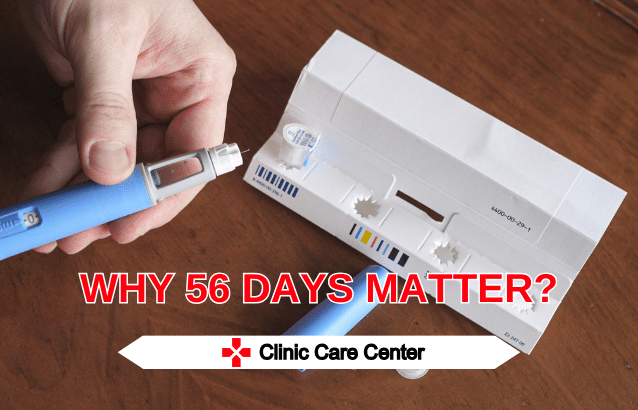When embarking on a journey to manage type 2 diabetes and achieve weight loss, Ozempic can be a valuable tool. However, its effectiveness hinges on consistent and correct usage. Often overlooked, the 56-day mark plays a significant role in optimizing your treatment.
While the 56-day mark is a common reference point for Ozempic, it’s essential to understand the underlying reasons behind this guideline. By exploring the potential consequences of deviating from this timeframe and discussing strategies for maintaining adherence, we can empower individuals to make informed decisions about their healthcare.
Beyond the 56-Day Mark – A Deeper Dive
Ozempic, a popular choice for managing type 2 diabetes and aiding in weight loss, has gained significant attention in recent years. While the initial 56-day period of use is often well-planned and guided by healthcare professionals, many individuals find themselves navigating the medication’s long-term effects. This article delves into the experiences and considerations associated with using Ozempic beyond the initial phase.
As time progresses and individuals continue to use Ozempic, it’s essential to understand the potential benefits, challenges, and adjustments that may arise. This article explores topics such as medication adherence, side effects, lifestyle modifications, and the ongoing role of healthcare providers in supporting long-term Ozempic use.
Why is 56 days so crucial for Ozempic?
Once you open an Ozempic pen, its shelf life is strictly limited to 56 days. This isn’t just a random number; it’s the point at which the manufacturer can no longer guarantee the medication’s potency and safety. After this period, using Ozempic could lead to unexpected side effects or ineffective treatment.
The risks of using Ozempic beyond 56 days
Ignoring the 56-day limit for Ozempic can be a gamble with your health. The medication may become less effective, and you could experience adverse reactions. To ensure safe and optimal results, it’s essential to discard unused Ozempic after the specified timeframe and start a new pen.
The dangers of using expired Ozempic
Using Ozempic beyond its 56-day shelf life can increase the risk of hyperglycemia. This condition occurs when blood sugar levels are abnormally high and can lead to serious health problems. Symptoms of hyperglycemia include excessive thirst, frequent urination, fatigue, and blurred vision.
Hypoglycemia: A potential complication
While less common than with some other diabetes medications, hypoglycemia (low blood sugar) can still occur when using Ozempic, especially if the medication’s effectiveness declines over time. Symptoms of hypoglycemia include sweating, trembling, confusion, dizziness, and palpitations.
Gastrointestinal disturbances: A common side effect
Ozempic is known to cause gastrointestinal side effects, such as nausea, vomiting, diarrhea, and abdominal pain. Using the medication irregularly or after an extended period may increase the likelihood or severity of these symptoms.
Injection site reactions: A potential irritation
Injection site reactions, including redness, swelling, itching, or pain at the injection site, may occur with Ozempic. Using the medication infrequently could potentially exacerbate these reactions.
Allergic reactions: A rare but serious risk
While rare, allergic reactions to Ozempic can occur. Symptoms may include rash, itching, swelling, severe dizziness, or trouble breathing. Using the medication irregularly may increase the risk of sensitization and allergic responses.
Fluid retention and swelling: A possible side effect
Some individuals may experience fluid retention and swelling (edema), particularly in the legs and feet, as a side effect of Ozempic. Using the medication inconsistently could potentially worsen these symptoms.
Pancreatitis: A serious but rare risk
In rare cases, Ozempic can cause pancreatitis, which is inflammation of the pancreas. Symptoms may include severe abdominal pain that radiates to the back, nausea, vomiting, and fever. Using the medication irregularly may still pose a risk of developing pancreatitis.
The path to managing type 2 diabetes or achieving weight loss goals can be challenging. However, one often overlooked aspect that can significantly impact your journey is the shelf life of your medications. Understanding and adhering to the recommended storage and expiration dates is crucial for ensuring the effectiveness and safety of your treatment.
By prioritizing the proper handling and disposal of expired medications, you’re not only protecting your own health but also contributing to a safer environment. Remember, your well-being is worth investing in. Take the time to familiarize yourself with the shelf life guidelines of your medications and make it a priority to follow them.
